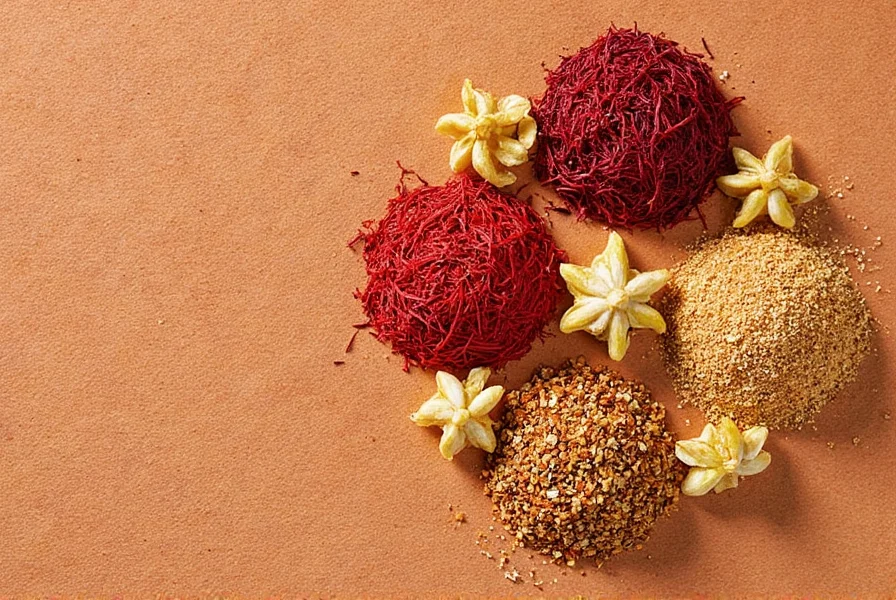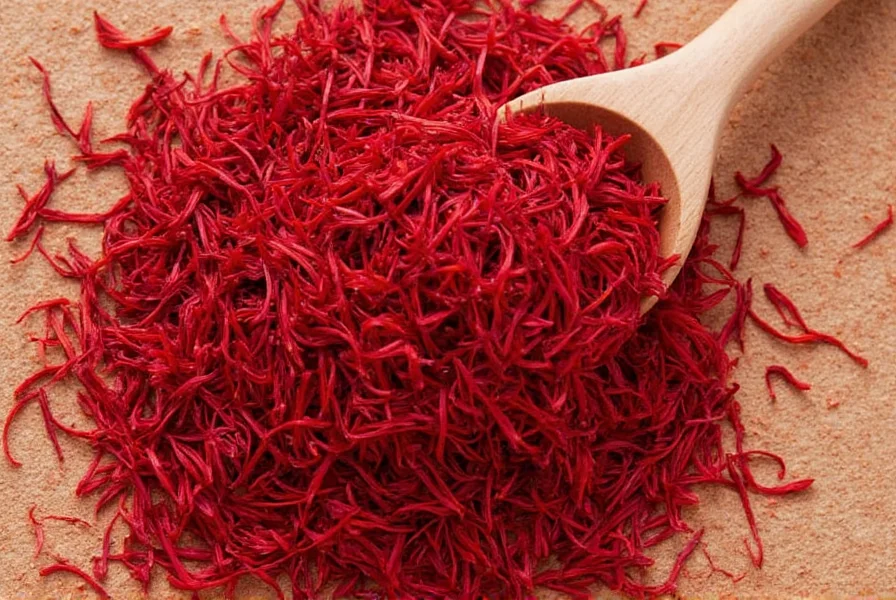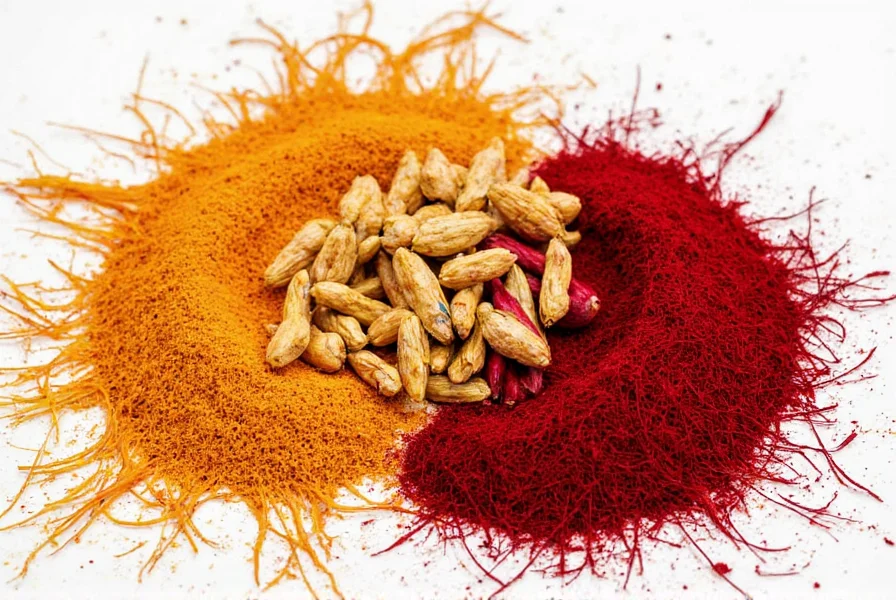When seeking saffron alternatives, understanding what makes saffron unique is essential. Saffron, derived from the Crocus sativus flower, is the world's most expensive spice by weight due to its labor-intensive harvesting process. A single pound requires approximately 75,000 flowers, making genuine saffron cost between $500-$5,000 per pound. This astronomical price drives many home cooks and professional chefs to explore affordable saffron alternatives that can mimic either its distinctive golden color, its subtle floral flavor, or both.
Why Saffron Substitutes Are Necessary
The high cost of authentic saffron makes it impractical for everyday cooking, especially in recipes requiring substantial quantities. Additionally, saffron's delicate flavor profile can be easily overwhelmed, making precise measurement crucial. Some individuals also seek saffron alternatives due to allergies or dietary restrictions. Understanding which characteristics matter most for your specific recipe—color, flavor, or both—will determine the most appropriate saffron substitute.
Top Saffron Alternatives Compared
Not all saffron alternatives serve the same purpose. Some excel at providing color, others offer flavor approximation, and a few attempt both. Choosing the right substitute depends on your specific culinary application and which aspect of saffron you need to replicate.
Turmeric: The Color Champion
Turmeric stands as the most accessible saffron alternative for color replication. This bright yellow spice provides a similar golden hue at a fraction of saffron's cost. When using turmeric as a saffron substitute:
- Use 1/4 to 1/2 teaspoon of turmeric powder per teaspoon of saffron threads
- Add early in cooking for maximum color infusion
- Best for dishes where strong saffron flavor isn't essential
While turmeric effectively mimics saffron's color, it introduces a distinct earthy flavor that differs significantly from saffron's floral notes. This makes it ideal for rice dishes, soups, and stews where the flavor profile can accommodate turmeric's characteristics. For those searching for affordable saffron alternatives for everyday cooking, turmeric represents the most economical choice.

Safflower: The Flavor Mimic
Safflower, sometimes called "Mexican saffron" or "bastard saffron," offers a closer flavor approximation to genuine saffron. The petals provide a mild, slightly sweet flavor with subtle floral notes. When substituting safflower for saffron:
- Use a 1:1 ratio by volume for threads
- Add toward the end of cooking to preserve flavor
- Excellent for delicate dishes like seafood risotto
Safflower lacks saffron's distinctive aroma but provides a more neutral flavor profile than turmeric. This makes it particularly valuable when seeking saffron substitute that doesn't alter dish flavor significantly. Many professional chefs consider safflower the best option when authentic saffron flavor matters more than perfect color replication.
Annatto: The Neutral Color Option
Annatto seeds (also known as achiote) provide vibrant color without significantly altering flavor. Commonly used in Latin American and Caribbean cuisines, annatto offers:
- Nearly identical golden-orange hue to saffron
- Minimal flavor impact (slightly peppery and nutty)
- Available as seeds, paste, or oil infusion
For optimal results, create an annatto oil by steeping seeds in warm oil for 15-20 minutes, then strain and use the colored oil in your recipe. This method works exceptionally well for saffron alternative for paella and other rice dishes where oil-based coloring is traditional. Annatto represents the best choice when you need saffron substitute that looks like saffron without changing the dish's fundamental flavor profile.
| Alternative | Color Strength | Flavor Profile | Best Culinary Uses | Substitution Ratio |
|---|---|---|---|---|
| Turmeric | ★★★★☆ | Earthy, pungent | Curries, soups, stews | 1/4 tsp powder = 1 tsp threads |
| Safflower | ★★★☆☆ | Mild, slightly sweet | Risotto, seafood dishes | 1:1 by volume |
| Annatto | ★★★★☆ | Nutty, peppery | Paella, rice dishes | Infuse in oil (1 tsp seeds per 2 tbsp oil) |
| Paprika | ★★☆☆☆ | Smoky, sweet | Goulash, stews | 1/2 tsp = 1 tsp threads |
| Marigold Petals | ★★★☆☆ | Grassy, mild | Broths, light sauces | 1 tbsp dried = 1 tsp threads |
Specialized Saffron Substitutes for Specific Applications
For Paella and Spanish Rice Dishes
When searching for the best saffron substitute for paella, consider a combination approach. Many Spanish chefs recommend using annatto for color plus a pinch of smoked paprika for complexity. This combination captures both visual and flavor elements essential to authentic paella. For traditional Valencian paella, however, nothing truly replaces genuine saffron, making it worth the investment for special occasions.
For Baking and Desserts
In sweet applications, saffron's floral notes shine differently than in savory dishes. For desserts requiring saffron:
- Use a small amount of turmeric plus orange zest for color and complementary flavor
- Consider saffron extract (more concentrated, thus more economical)
- For Persian rice pudding, try a touch of rose water with turmeric
How to Substitute Saffron in Recipes: Practical Tips
Successfully replacing saffron requires understanding how to adjust recipes:
- For color-focused recipes: Use turmeric or annatto early in cooking to maximize color extraction
- For flavor-focused recipes: Add safflower toward the end of cooking to preserve delicate flavors
- For best results: Bloom alternatives in warm liquid before adding to dishes (like saffron)
- To approximate saffron's aroma: Combine turmeric with a pinch of cardamom or cinnamon
When Not to Substitute Saffron
Certain dishes rely so heavily on saffron's unique characteristics that substitutes fall short. These include:
- Traditional Persian tahdig (crispy rice)
- Swedish saffron buns (Lussekatter)
- Authentic Spanish paella valenciana
- Italian risotto alla milanese
For these signature dishes, consider purchasing small quantities of genuine saffron or using saffron extract, which provides more flavor per dollar. When searching for natural saffron alternatives for special occasion cooking, remember that some culinary traditions simply demand the real thing.
Testing Saffron Alternatives in Your Kitchen
The most effective way to determine the best saffron alternative for your needs is through experimentation. Start with small test batches of your favorite saffron-containing recipes, trying different substitutes to see which works best for your palate and cooking style. Keep detailed notes about which alternatives work well for specific dishes—this personalized approach yields better results than generic substitution charts.
Conclusion: Finding Your Perfect Saffron Alternative
Selecting the right saffron substitute depends entirely on your specific culinary needs and priorities. For everyday cooking where saffron's color matters most, turmeric or annatto provide excellent economical alternatives. When flavor approximation is crucial, safflower offers the closest match. Understanding these distinctions helps home cooks make informed decisions when seeking practical saffron alternatives for home cooking. Remember that no single substitute perfectly replicates all aspects of saffron, but with thoughtful selection, you can create delicious dishes that honor the spirit of saffron-containing recipes without the premium price tag.












 浙公网安备
33010002000092号
浙公网安备
33010002000092号 浙B2-20120091-4
浙B2-20120091-4